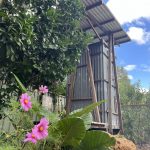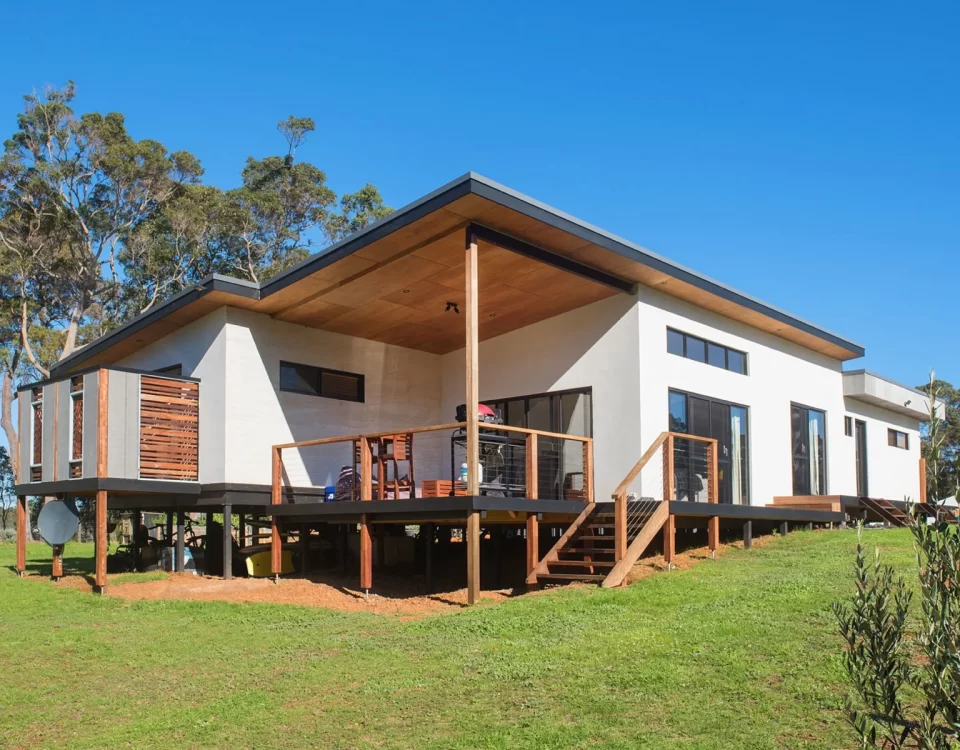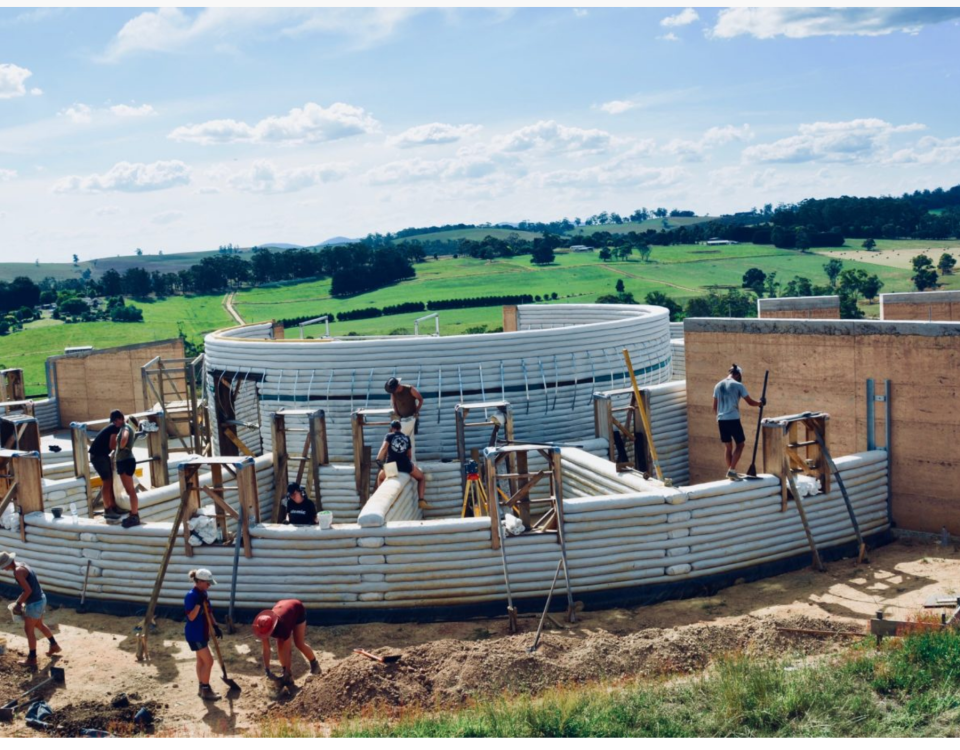
Education and trade opportunities for natural building in Australia
16/09/2023
How natural homes use water smarter and better than most dwellings
02/10/2023Rammed earth is an ancient form of building whereby a damp mix of aggregates—commonly gravel, sand, silt and clay—are rammed into removable frames (formwork) to create walls, foundations and floors. Stabilised rammed earth is a variant that includes the addition of cement to increase strength and durability. The finished walls can be 100 to 600 mm thick, has a very high thermal mass and is natural and earthy in appearance.
With origins tracing back thousands of years and from sites across the globe, rammed earth (often interchangeable with Pise) traditionally comprised of clay-rich soil, water and naturally sourced stabiliser, such as plant fibers, bitumen, or animal urine.
This mixture was compacted into temporary formworks and allowed to set and harden in the sun. The formworks are then removed to leave behind a remarkably durable and robust structure capable of withstanding compressive forces up to 2.5 mega pascals (roughly 10% of the compressive strength provided by the average modern brick).
Fast forward to today and we can see an increased popularity in rammed earth building techniques over the past three decades. Australia in particular has seen an especially high interest in cement-stabilised rammed earth (CSRE), which utilises a mix of cement, low-clay soil and water. As a building method, rammed earth is one of the most sustainable materials to choose in home design.
Its high thermal mass means heat transfer into the walls is slower during the day, subsequently contributing to the heating and cooling of the home and reducing the use of air-conditioning and heating units. Rammed earth generally has low embodied energy and low environmental impact, but this depends on cement content and the source of the materials. Materials that are quarried and transported long distances to the construction site will have higher embodied energy and impact.
Each state and territory at one point throughout Australia’s recent colonial history used rammed earth in some capacity, although it never really took off, except perhaps in New South Wales, where there had been many pisé constructions in the Riverina, due to the lasting influence of the architectural legacy of the MacKnight family.
As the technique is highly specific, there are not too many design and construct rammed earth companies around—in Victoria, there’s only a handful. Rammed earth homes in this state tend to be built with the highest level of expertise from very experienced builders and architects. In western Australia and in parts of the Riverina in NSW this is a different story. https://historicrammedearth.wordpress.com/new-build/australia/
In 2015, the University of Western Australia hosted a conference that brought together engineers, specialist contractors, architects and soil scientists with a shared passion for the beauty and benefits of rammed earth. With this State regarded as the cradle of rammed earth in Australia, UWA engineers researched its thermal qualities and hosted the First International Conference on Rammed Earth Construction.
Mr Dobson, who heads the Earth Building Association of Australia, says with no big lobby group for this niche industry such issues remain hurdles. “The Federal Government needs to update the building code and change a thermal rating system set up to suit sealed light-weight insulated boxes not high thermal mass materials. This has already been partly done in Europe.” There has been a significant architectural achievement in WA with the Great Wall of 230 meters passing all structural and insulation tests with flying colours.
Rammed earth is generally very durable but needs protection from driving rain and long-term exposure to moisture. Most modern Australian rammed earth walls do not require additional waterproofing except in very exposed conditions.
For more references head to
https://www.yourhome.gov.au/materials/rammed-earth




